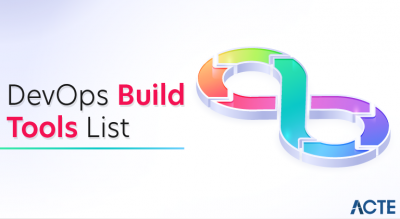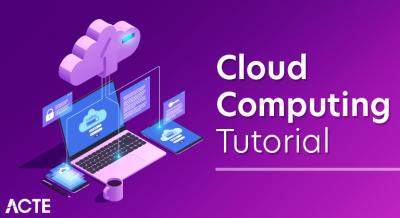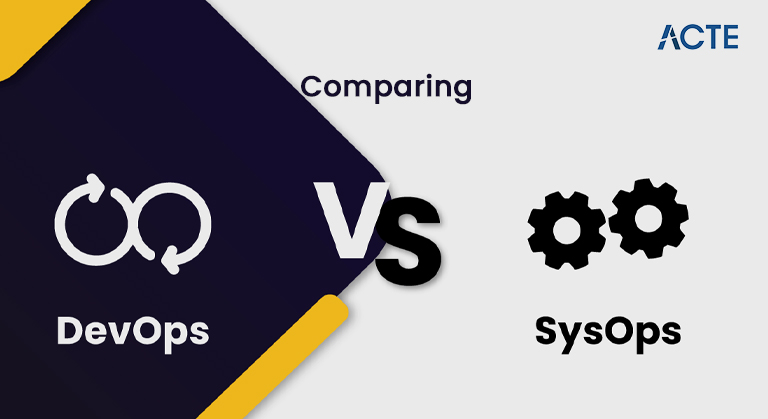
- Introduction to DevOps Standards
- Importance of Standardization in DevOps
- CI/CD Pipeline Best Practices
- Infrastructure as Code (IaC) Standards
- Security and Compliance in DevOps
- Containerization and Orchestration Standards
- Monitoring and Logging Best Practices
- Role of Automation in DevOps Standards
- DevOps Metrics and Performance Monitoring
- Standard DevOps Tools and Frameworks
- Challenges in Implementing DevOps Standards
- Future Trends in DevOps Standardization
Introduction to DevOps Standards
DevOps is a set of practices aimed at unifying software development (Dev) and IT operations (Ops) to improve collaboration, automation, and quality of software delivery. To ensure that DevOps practices are efficient, scalable, and reliable, it’s crucial to follow specific DevOps standards. Devops Training standards help establish a common framework and best practices that guide organizations in successfully implementing DevOps. DevOps standards are guidelines that define the expectations for various processes involved in software development, deployment, and operation. These standards ensure that teams are aligned, tools are integrated effectively, and processes are automated to achieve higher productivity, quality, and security. DevOps standards cover several domains, including the CI/CD pipeline, security, infrastructure, monitoring, and automation. By adhering to standards, organizations can ensure consistency across different teams and processes, improve communication between development and operations, and deliver software more efficiently and reliably.
Importance of Standardization in DevOps
Standardization in DevOps is essential for several reasons, By establishing common standards, organizations ensure that DevOps processes can be adopted smoothly across teams and projects, promoting a culture of quality, reliability, and continuous improvement.
- Consistency: Standardizing processes, tools, and Kubernetes and Devops for Streamlined Operations helps teams work with a consistent set of guidelines, reducing the risk of errors and improving the predictability of outcomes.
- Improved Collaboration: Standardized practices foster better communication and collaboration between development and operations teams. Coordination becomes smoother when both teams follow the same set of processes and tools.
- Efficiency: Standardization eliminates the need for teams to reinvent the wheel. With predefined best practices and tools, teams can avoid repetitive tasks and focus on delivering value.
- Scalability: As organizations grow, it becomes increasingly essential to scale operations efficiently. DevOps standards ensure that processes and tools are scalable and can be applied consistently across different teams, projects, or organizations.
- Compliance and Security: Standardizing security practices, testing, and deployment methods helps ensure compliance with industry regulations and organizational security policies. It minimizes risks and improves the integrity of software deployments.
- Faster Time-to-Market: With standardized processes in place, teams can deliver software faster and with fewer delays, giving businesses a competitive advantage.
CI/CD Pipeline Best Practices
The CI/CD (Continuous Integration/Continuous Delivery) pipeline is a central aspect of DevOps, automating the process of integrating code, testing it, and deploying it to production. To ensure the pipeline operates smoothly and efficiently, several best practices should be followed, Automate Everything Every aspect of the CI/CD pipeline should be automated, including code integration, testing, deployment, and infrastructure provisioning. Automation reduces human errors and speeds up delivery cycles. Test Early and Often Implement automated testing in the Continuous Integration pipeline. Tests should be run at each stage (unit, integration, functional, performance) to ensure that code changes do not introduce bugs. A Comprehensive Devops Maturity Model a Fast and Reliable Build Ensure the build process is fast and reliable. A slow or unreliable build can lead to delays in the pipeline, hindering productivity. Use Feature Branches Developers should work in feature branches, isolating new features from the main codebase. Feature branches should be merged back into the main branch only after they pass testing. Enable Continuous Monitoring Integrate monitoring into the CI/CD pipeline to monitor performance, application errors, and security vulnerabilities. This ensures real-time feedback and faster issue detection. Keep Releases Small Releases should be small and incremental rather than large and monolithic. This reduces the complexity of each release and allows for quicker rollbacks in case of issues. Version Control Everything: Use version control systems such as Git to track changes in code, configuration files, infrastructure, and deployment scripts. This ensures traceability and makes it easy to roll back to previous versions if necessary. Implement Rollbacks Ensure the pipeline includes mechanisms for quick rollbacks to a previous stable version in case of deployment failures.
Learn the fundamentals of Devops with this Devops Online Training.
Infrastructure as Code (IaC) Standards
Infrastructure as Code (IaC) is a practice that involves managing and provisioning infrastructure through code and automation. Adhering to IaC standards ensures that infrastructure is consistent, reproducible, and easy to operate. Key IaC standards include:
- Declarative vs. Imperativev: Use declarative IaC tools (like Terraform) where you specify the desired state of the infrastructure rather than how to achieve that state (imperative style). This makes infrastructure more straightforward to manage and maintain.
- Version Control for Infrastructure: Store infrastructure code (e.g., Terraform files, CloudFormation templates) in a version control system. This ensures that changes are tracked, auditable, and reversible.
- Modular Code: Break infrastructure code into smaller, reusable modules. This helps reduce duplication and enhances maintainability.
- Environment Consistency: Ensure that development, staging, and production environments are configured consistently. IaC makes Practices and Tools in Devops easier to replicate environments, ensuring that infrastructure behaves identically across all environments.
- Automated Provisioning: IaC to automate infrastructure provisioning across cloud providers or on-premises environments. This reduces the risk of human error and ensures that environments are provisioned in a repeatable manner.
- Security and Compliance: Include security configuration in IaC templates to ensure that infrastructure meets compliance requirements and best practices.
- Testing IaC: Just like application code, infrastructure code should be tested before deployment. Use tools like Test Kitchen or InSpec to automate testing IaC templates and configurations.
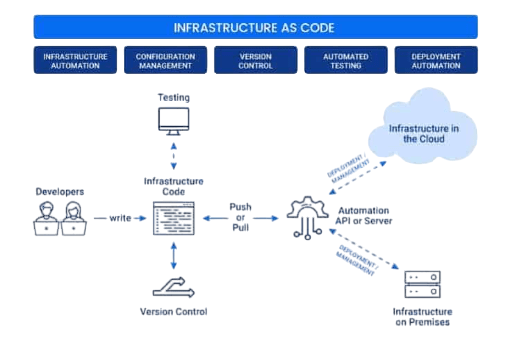
Security and Compliance in DevOps
Security and compliance are critical aspects of DevOps, and they must be integrated throughout the DevOps lifecycle. This is known as DevSecOps, the practice of incorporating security into every phase of the DevOps pipeline. Shift-Left Security: Implement security checks early in the development process (e.g., during the coding or Continuous Integration phase) rather than waiting until deployment. This reduces vulnerabilities and improves application Devops Training . Automated Security Testing Incorporate automated security testing (static code analysis, vulnerability scanning, and penetration testing) into the CI/Continuous Integration pipeline to identify vulnerabilities before they reach production. Compliance as Code Define security and compliance requirements as code and automate compliance checks in the pipeline. This ensures that compliance is continuously monitored and maintained. Role-Based Access Control (RBAC) Implements RBAC for code repositories and deployment pipelines. This ensures that only authorized individuals can make changes to infrastructure or deploy co Data Protection Encrypt sensitive data, both in transit and at rest, and follow industry best practices for securing databases, authentication, and authorization. Auditing and Monitoring Continuously monitor and audit the system’s security posture in production. Implement real-time alerting for suspicious activities or security breaches.
Dive into Devops by enrolling in this Devops Online Course today.
Containerization and Orchestration Standards
Containerization and orchestration are essential for the scalability and efficiency of modern DevOps pipelines. Containers like those managed with Docker allow applications and their dependencies to be packaged together in isolated environments, making them easier to deploy and scale. Key containerization and orchestration standards include:
- Docker Best Practices: Write efficient and secure Dockerfiles. Ensure images are lightweight and have minimal dependencies to reduce the attack surface.
- Kubernetes: Kubernetes has become the de facto standard for container orchestration. Follow best practices for configuring Kubernetes clusters, such as using Helm charts for package management, enforcing resource limits and quotas, and using Kubernetes namespaces for environment separation.
- Container Security: Use tools like Aqua Security or Twistlock to ensure container security. Regularly scan container images for vulnerabilities and use trusted base images.
- CI/CD for Containers: The CI/Continuous Integration pipeline automates the building, testing, and deployment of containerized applications, ensuring that applications are deployed reliably and consistently.
- Declarative Configuration: Use declarative configuration files (e.g., YAML in Kubernetes) to manage container deployments and Understanding Python in Devopsthe system is always in the desired state.
Monitoring and Logging Best Practices
Effective monitoring and logging are essential in DevOps to maintain application health, detect issues early, and ensure a smooth user experience. Best practices for monitoring and logging include:
- Centralized Logging: Use tools like ELK Stack (Elasticsearch, Logstash, Kibana) or Splunk to aggregate logs from different services and environments into a single location for easy access and analysis.
- Monitoring and Alerting: Implement comprehensive monitoring for application performance, availability, and infrastructure health. Use tools like Mastering Linux for Devops, Grafana, or Datadog to create dashboards and set up alerts for anomalies.
- Distributed Tracing: Implement distributed tracing with tools like Jaeger or Zipkin to trace requests across microservices and identify bottlenecks or errors in the system.
- Real-Time Monitoring: Ensure that monitoring is real-time and that alerts are actionable. Set up thresholds for key performance indicators (KPIs) and automate responses for common issues.
- Retention Policies: Define log retention policies to avoid accumulating excessive data. Implement data archiving or purging strategies for old logs.
Take charge of your Devops career by enrolling in ACTE’s Devops Master Program Certification Training today!
Role of Automation in DevOps Standards
Automation is critical in DevOps because it enables repeatability, consistency, and speed. Automating key processes ensures teams can focus on adding value rather than performing manual tasks. Key areas where automation is essential in DevOps standards include:
- Code Integration and Delivery: Automating the CI/CD pipeline, from code integration through testing and deployment, reduces manual errors and accelerates software delivery.
- Infrastructure Provisioning: Automation tools like Terraform and Ansible allow teams to provision infrastructure quickly and consistently, reducing human error and improving scalability.
- Testing: Automating testing, including unit, integration, and security tests, ensures that code is thoroughly validated before it reaches production.
- Monitoring and Alerts: Automated tracking and alerts enable teams to detect issues and take corrective actions quickly without manual intervention.
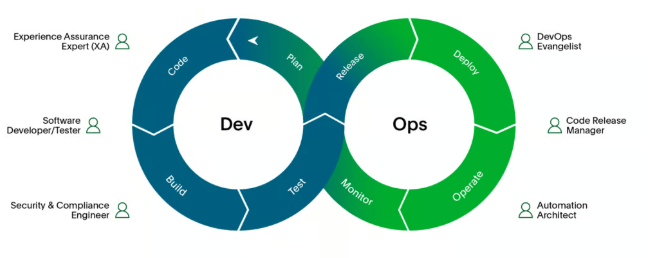
DevOps Metrics and Performance Monitoring
Measuring the success of DevOps implementation is critical to ensure continuous improvement. Key metrics for DevOps include:
- Lead Time: The time taken from code commit to production deployment. Shorter lead times indicate efficient CI/Continuous Integration pipelines.
- Deployment Frequency: The frequency of deployments indicates how quickly changes are being delivered to production.
- Change Failure Rate: The percentage of changes that result in failures or require rollbacks. A lower change failure rate indicates higher-quality deployments.
- Mean Time to Recovery (MTTR): The average time it takes to restore service after an incident. A low MTTR indicates effective incident response.
- Customer Satisfaction: Ultimately, DevOps aims to deliver software that meets customer needs. Tracking user feedback and satisfaction helps gauge success.
Want to ace your Devops interview? Read our blog on Devops Interview Questions and Answers now!
Standard DevOps Tools and Frameworks
Several tools and frameworks are widely used in Ansible in Devops for achieving standardization and automation:
- Version Control: Git, GitHub, GitLab
- CI/CD: Jenkins, GitLab CI, CircleCI, Azure DevOps
- IaC: Terraform, Ansible, Chef, Puppet
- Containers: Docker, Kubernetes, OpenShift
- Monitoring: Prometheus, Grafana, Datadog
- Security: SonarQube, Aqua Security, Twistlock
Challenges in Implementing DevOps Standards
Implementing DevOps standards comes with challenges:
- Cultural Resistance: Shifting to a DevOps culture often faces resistance from teams used to traditional development and operational silos.
- Tool Integration: Integrating multiple tools in a seamless pipeline can be complex and require significant effort.
- Skill Gaps: DevOps requires specific skills in automation, security, and infrastructure, which may not be readily available within teams.
- Legacy Systems: Integrating legacy systems with modern DevOps practices can be difficult and costly.
Future Trends in DevOps Standardization
The future of DevOps standardization will likely involve AI and ML Integration will help automate decision-making, improve monitoring, and enhance security. Serverless Architectures The use of serverless computing will grow, requiring new infrastructure provisioning and management standards. Unified Devops Training A more unified and integrated DevOps toolchain will streamline the process of managing infrastructure, security, monitoring, and delivery. Standardizing key aspects of the DevOps lifecycle can help organizations achieve greater efficiency, scalability, and reliability in their software delivery processes.


